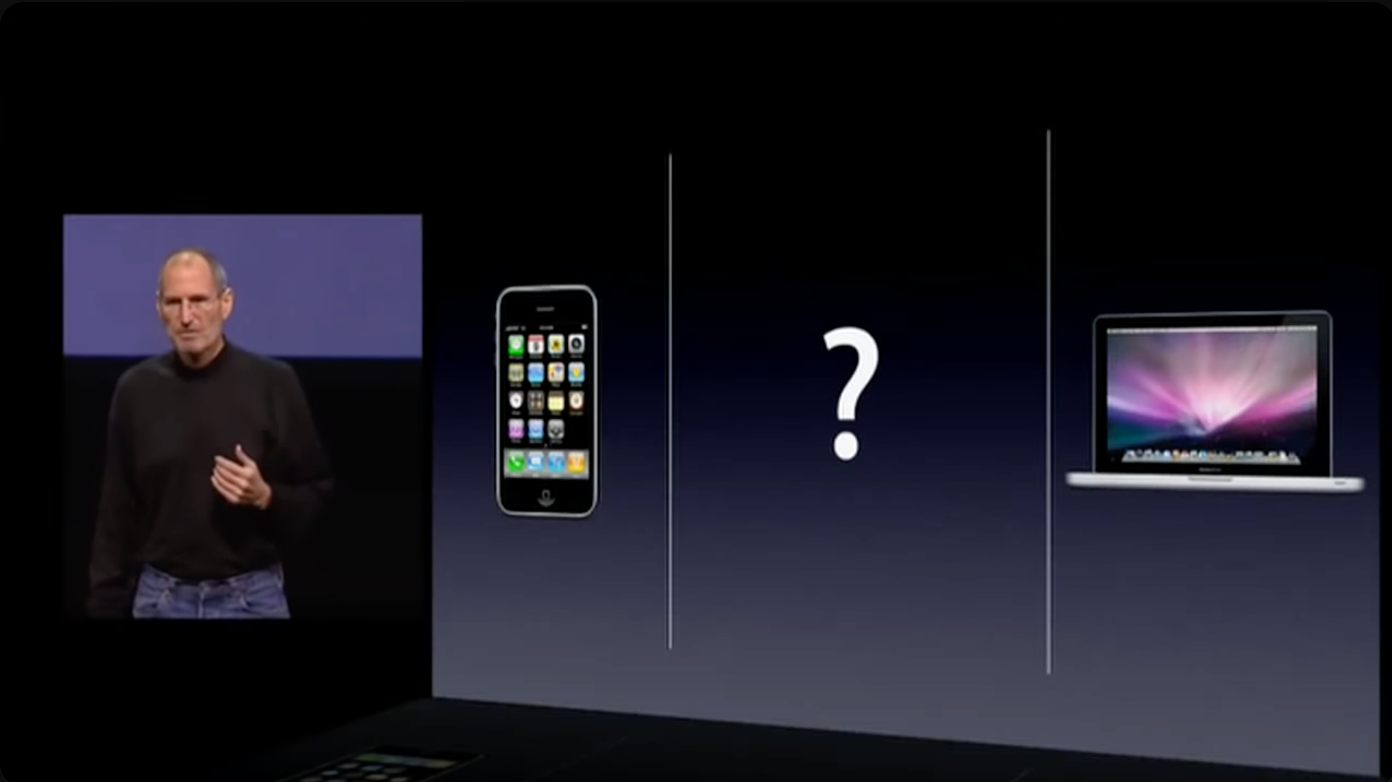How AI infiltrated the iPhone event

On Monday, Apple held a special event called It’s Glowtime. Clocking in at 1 hour, 38 minutes and 50 seconds, it was a long one.
At the event, they introduced to the world the Apple Watch Series 10, AirPods 4 and iPhones 16 and 16 Pro. They also introduced a host of new software features – one of which being that now the AirPods Pro 2 that you already have can be transformed into hearing aids.
But it was Apple Intelligence – Apple’s answer to AI – that stole the show. They spent over twenty minutes talking about it. An unprecedented amount of time spent talking about software at an event that is typically reserved for boasting about industrial design or showing off hardware innovations.
Monday felt… different. It was an Apple event on the surface: it felt like one, it looked like one. All the usual characters were there, plus some new ones. The format – as a fan, and a regular viewer – felt familiar.
But what was different was the focus. It wasn’t really on the thing you hold in your hand or wear on your wrist or put in your ears. No – the focus was the software: the things that run on the things that you hold in your hand or wear on your wrist or put in your ears.
Today, let’s talk a little bit about Apple Intelligence, the history of Apple events, and what Monday’s announcements might actually tell us about the longer-term fortunes for the world’s most profitable company.
“Ever wonder what this pocket is for?”
From the iPod nano Wikipedia page:
On September 7, 2005, Apple introduced the iPod Nano at a media event, with Steve Jobs pointing to the small watch pocket in his jeans and asking, "Ever wonder what this pocket is for?"
I didn’t watch this moment – I was 11 at the time – but it’s, I think, an important moment in my life. It’s also an incredible example of Jobs’ showmanship – his ability to create hype and excitement with a few words and and everyday piece of clothing. Hiding in his jeans watch pocket was the iPod nano – a device that has had a profound impact on me and my life. This sounds very dramatic! But I’ll explain why. To do so, we need to skip ahead six months.
It’s April 2006. I’m about to turn twelve years old. I’m trying to decide what I want for my birthday. Everyone at school has been getting mp3 players, so I want one. I ask for one – an mp3 player. The day rolls around, and I’m given an iPod. An iPod nano. The device that Steve Jobs had pulled out of his watch pocket six months earlier on stage in San Francisco.
Before then, to me technology was Window XP. I was into computers a bit, but there’d never been technology like computers that you could hold in your hand. And then the iPod came along and it felt like magic. I loved it.
And it’s this iPod that got me into music, into technology properly, and into marketing. I think it’s probably obvious how the iPod got me into music and technology – it is quite literally a music player which felt like cutting-edge technology. But marketing? I don’t think I realised it at the time, but I look back now and this product from this company is why I’m a marketer today.
I guess I was aware of the packaging, the naming, the product marketing and the positioning of the iPod nebulously, but what really kicked it off was in 2006, when I heard that Apple was holding a special event on 12th September. I watched along – not live video, but via liveblogs – taking in the show Jobs would put on for the next big thing – this year an incremental update to the iPod nano and the original Apple TV.
What followed, from that moment was a yearly (or sometimes biyearly!) product marketing masterclass in the form of future product announcement events. Apple demonstrated how they build products that are desirable and useful and cool, and then talk about them in a human way. And I still watch every Apple event to this day – eighteen years later.
1,000 songs in your pocket, and other such explainers
The message for the original iPod was super simple. 1,000 songs in your pocket.
A perfect, short, succinct sentence that tells you everything you need to know. I didn’t know it, but I was learning about great product marketing without even realising. Over the coming years, I’d hear many more lessons in product positioning. Here’s a few examples:
- From the iPhone launch in 2007:
“An iPod. A phone. An internet communicator. An iPod. A phone. Are you getting it? These are not three separate devices. This is one device. and we are calling it iPhone. Today, Apple is going to reinvent the phone.”
- In 2010, Jobs put this slide on screen:

He was teeing the audience up here – could there be room for a device that sits between the iPhone and the Mac? His answer, of course, was yes – and the iPad was announced to the world.
- And finally, not to let Jobs have all the fun, here’s Tim Cook in 2014:
This is great for a different reason. Apple Watch required showing off in a way that the others didn’t – precisely because it was intended as a fashion piece at the time. Cook sets out Apple’s values, then lets the product do the talking. Appropriate for a device you wear. He knows – smartly, I think, that he’s not Jobs, and wants the products to talk for him.
At each of these moments, Apple’s biggest skill is how well they sell the products they’re presenting. They take complex technology and they make it human. They use everyday words to name their products (iPhone, Apple Watch), but then also use technical words in appropriate places to make the product seem cutting-edge. They use anchoring: explaining everything in words and concepts that already exist – they even called widgets on the Apple Watch complications, a nod to traditional watchmakers.
Why am I telling you all this, with examples? Well, because on Monday, for what felt like the first time to me, Apple was a bit confused. Like it might have misplaced its rulebook for a minute. And it’s all to do with AI.
Apple Intelligence
ChatGPT launched two years ago and altered the fate of technology companies. AI had been in the works for years, but none had cracked an interface or user experience that masses of people wanted to try. Until ChatGPT. Almost overnight, the power of large language models (LLMs) took the internet by storm. Millions flocked to ChatGPT — a prototype at the time — to try it out.
Fast forward to June 2024 and ChatGPT is pretty much a household name. It’s synonymous with AI. Many think that LLMs are AI. And Google and Meta, as well a host of other start ups like Perplexity and Anthropic, are competing hard with OpenAI (ChatGPT’s parent) to be the future of AI.
Apple doesn’t have an AI story at this moment in time. In fact, they’d been infamously resistant to even saying AI, preferring terms like neural networks and machine learning to describe the artificial intelligence technologies they had been deploying in their devices for years – from recognising your faces in photos through to handwriting recognition.
This all changed that June, when Apple Intelligence was announced at WWDC, Apple’s Worldwide Developers Conference. There, they explained that a whole set of new Intelligence features were coming to iOS 18 – from rewriting your emails through to answering questions about your own personal context, like pulling flight numbers from your text messages when you ask “when’s mum’s flight going to arrive?”. Or generating custom emojis for you. This felt like the right audience to talk about Apple Intelligence with – developers who are highly invested in new technologies and platforms.
But then… on Monday, at Apple’s Special Event for iPhone, Apple Watch and AirPods, it wasn’t, at many points, about any of those devices. Yes – there were some great upgrades, like a bigger watch face on the Series 10 or a new camera button on the iPhone, but so. Much. Time. Was spent talking about Apple Intelligence.
And here’s the thing with Apple Intelligence. It’s a group of features connected by technology class, not by real world use. Videos and photos both live in the Camera app, because they are similar enough. It makes sense to have Apple Music house albums, songs, radio stations. They fit under the same roof.
Yet Apple Intelligence… isn’t that. It’s a collection of disparate features that feel like AI technologies. Yet they manifest in different places, seemingly randomly sometimes. Image playgrounds is an app. GenMoji lives in your keyboard. You can now access ChatGPT through Siri. Siri can answer questions about you and your life. Yet things like handwriting and photo recognition aren't Apple Intelligence, they're... just a part of the software.
Not only does Apple Intelligence stretch across different experiences and paradigms across iOS, it’s also not all available at once. For now, it’s only available in US English, and only some features are available. For a company that famously ships the things it announces, there’s a lot missing from the iPhone 16 when it launches next week.
Apple Intelligence features were positioned as a key selling point for this year's iPhones, yet most of them sold around the world won't get it next week. And for those who do, they don't get the full experience. Having these features so disjointed across the product and time doesn't feel simple. It’s confused.
Cook's next category
It just feels… strange. But I know why things are this way. It’s because Cook cares deeply about how Apple is perceived. When he took over as CEO, there were grave doubts about Apple’s ability to grow as a hardware company. So he pivoted. Apple became a services company. Services now account for more revenue than iPad, Mac and Apple Watch combined. It’s quelled those market fears and grown Apple to be the most profitable company in the world.
I think Cook thinks AI is the next big frontier. He wants Apple to be seen as an AI company. And the company seems to have rallied around this mission – but have they rallied a little too quickly?
This feels different to the services push. Apple Intelligence feels hasty. Quick. Less planned, less thought through. Perhaps it’s because there’s this feeling that AI is a race. That the winner will be picked quickly, so Apple has no time to waste.
The features under Apple Intelligence are all great. I can’t wait to try them. And I’m sure they’re going to make iPhones and iPads and Macs so much better than they are today. But I'm not sure they need to exist under the Apple Intelligence umbrella. I think we’re missing some of the crystal clear messaging of old from Apple, perhaps. The one-liner about what it is and why you’ll like it.
And maybe I’m still learning from these events. Just, this time, it’s a few things to avoid.





